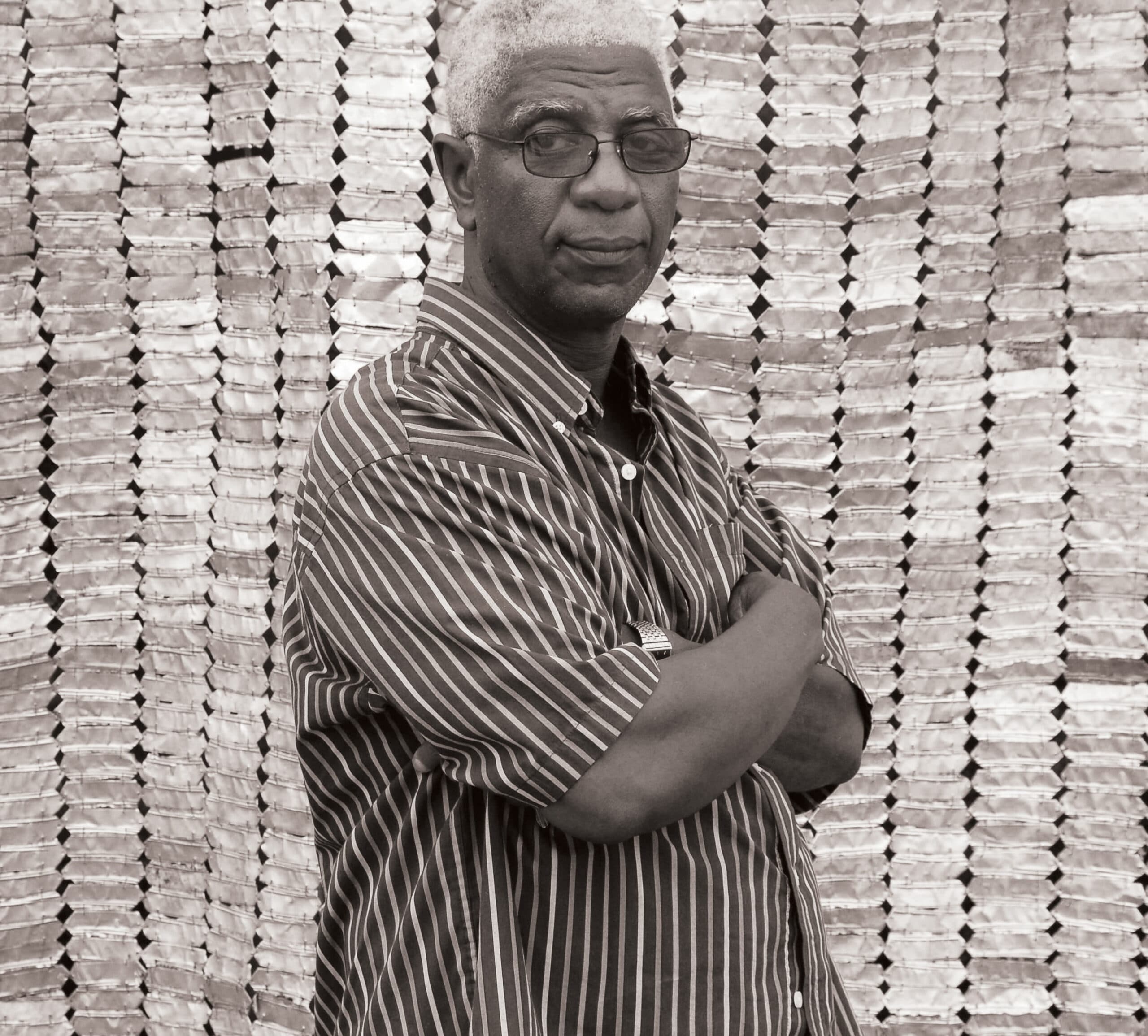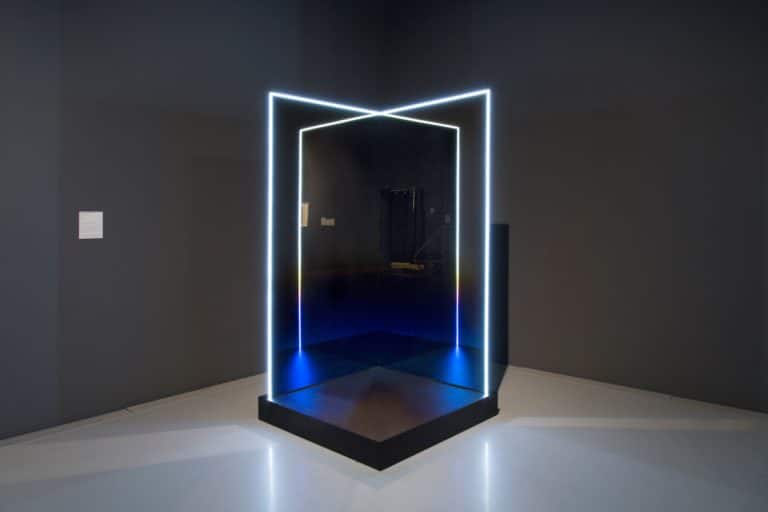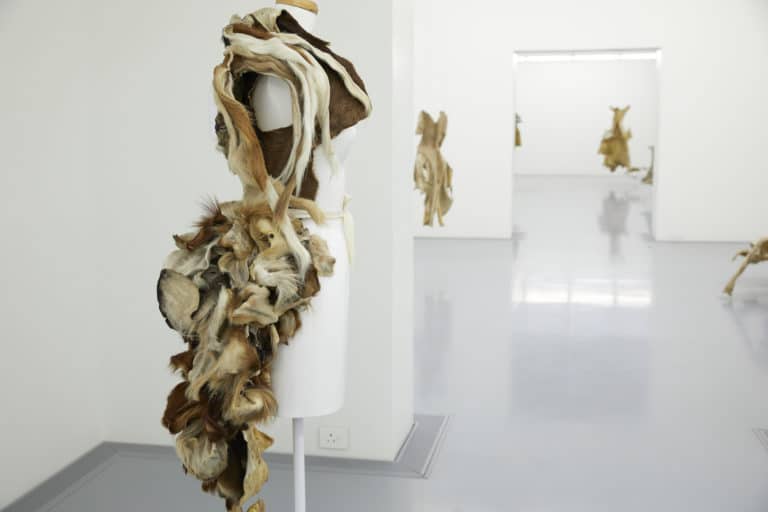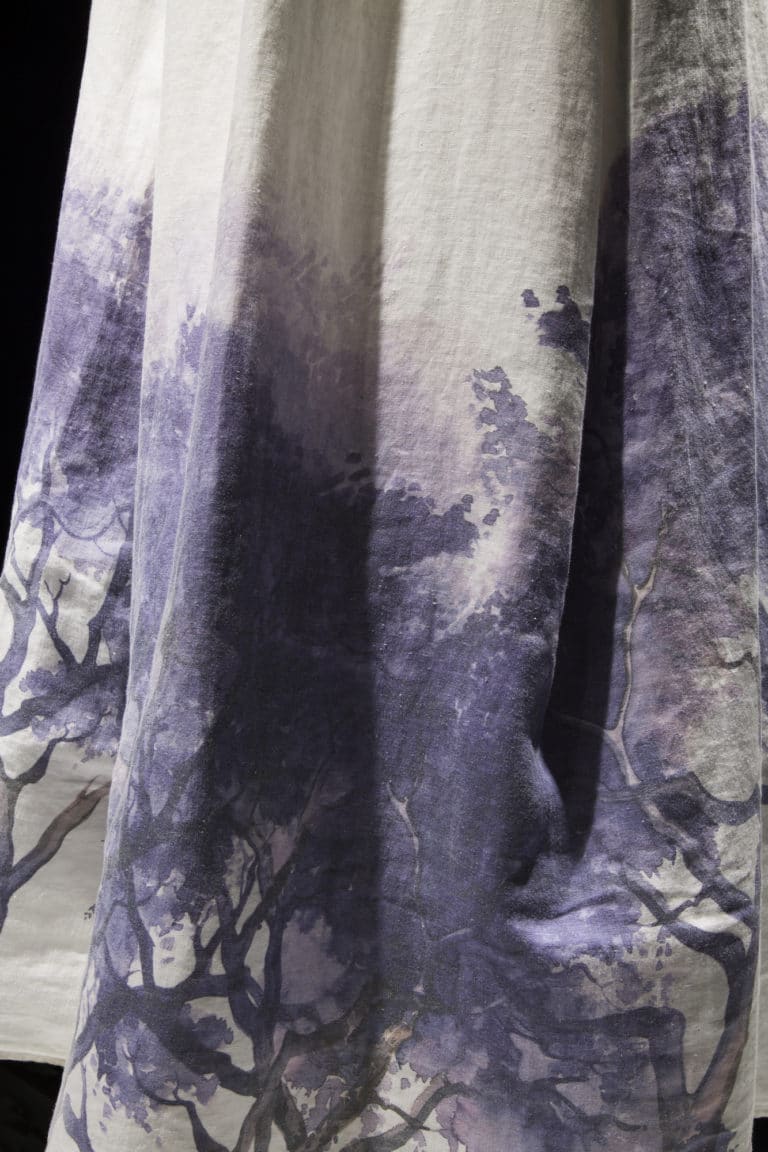El Anatsui was born in Ghana and currently lives in Nigeria, where he maintains his studio. An alumnus of the College of Art, Kwame Nkrumah University of Science and Technology (KNUST), Kumasi, Ghana, Anatsui holds a BA (Art) as well as a post-graduate diploma in Art and Education (1969). For many years he was Professor of Sculpture and, latterly, Departmental Head at the University of Nigeria, Nsukka.
As both a sculptor and teacher, Anatsui’s career has spanned more than forty years. Best known for his repurposing of alcohol bottle caps into large-scale hanging installations, Anatsui’s art weaves together the discarded materials of production, trade, and consumption made prevalent in Africa during the colonial expansion of Europe and the Americas.
“We have our own way of presenting drinks, but this one of putting them in bottles [and] capping them, came from Europe,” he explained to former student Chika Okeke-Agulu while installing work at the Sterling and Francine Clark Art Institute in Massachusetts (2011). “The currency of drink happened to be used in paying for slaves who were brought to the West, the Americas. [They] produced more sugarcane for more drink, which goes back into Europe and then comes back into Africa.”
Anatsui’s work breaks away from the traditional cast of sculptural practice to invoke a multi-layered, sensory re-imagining of our material world. Reviewing the first major retrospective of his work, El Anatsui: When I last wrote to You about Africa, at the Royal Ontario Museum (2010), art historian Terry Smith marvelled, “In his wall hangings “¦ El Anatsui has accomplished one of the very few genuine breakthroughs in contemporary art anywhere in the world today.”
His sculptures have been collected by major international museums. This includes the British Museum (London), the Centre Pompidou (Paris), the de Young Museum (San Francisco), the Metropolitan Museum of Art (New York), Guggenheim (Abu Dhabi), Osaka Foundation of Culture (Osaka), the Tate Modern (London), and the Museum of Modern Art (New York).
During the 52nd Venice Biennale (2007) he transformed the facade of the Palazzo Fortuny with his installation Fresh and Fading Memories, the first of many external installations that followed. These include: Broken Bridge at Le Palais Galliera, as part of the Paris Triennial (2012); TSIATSIA – searching for connection (2013) at the Royal Academy of Arts (London, UK) for which he received the prestigious Charles Wollaston Award; and Kindred Viewpoints at El Badi Palace during the Marrakech Biennale in 2016.
Selected solo exhibitions include El Anatsui: Benchmarks at the Royal Academy of Arts / October Gallery (London: 2017) El Anatsui: Meyina, Prince Claus Fund Gallery (Amsterdam, Netherlands: 2016-2017); El Anatsui: New Works, October Gallery (London: 2016); Five Decades, first presented by Jack Shainman Gallery at The School in Kinderhook in 2015; Gravity and Grace: Monumental Works by El Anatsui, Brooklyn Museum (New York: 2013 – touring U.S.) El Anatsui: When I Last Wrote to You About Africa, organised by the Museum for African Art, New York at the Royal Ontario Museum (Toronto, Canada: 2010 – touring); A Fateful Journey: Africa in the Works of El Anatsui at the National Museum of Ethnology (Osaka, Japan: 2010 – touring).
In 2014, he was made an Honorary Royal Academician as well as elected into the American Academy of Arts and Sciences. In 2015 he was awarded the Golden Lion for Lifetime Achievement at the 56th Venice Biennale, All the World’s Futures; and in 2016, he was awarded an Honorary Doctorate from the University of Cape Town, and was honoured with the Praemium Imperiale Award for Sculpture in 2017.




